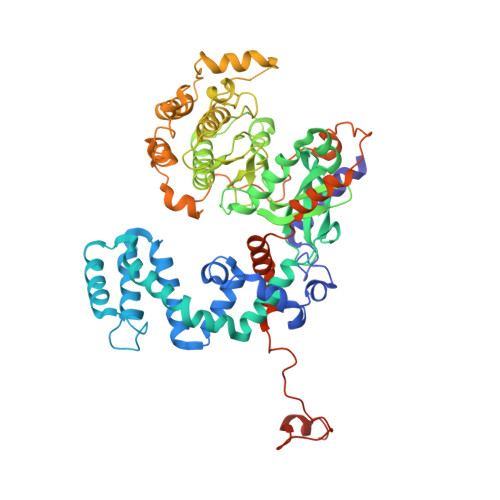Molecular basis for activation of G protein-coupled receptor kinases.
Boguth, C.A., Singh, P., Huang, C.C., Tesmer, J.J.(2010) EMBO J 29: 3249-3259
- PubMed: 20729810
- DOI: https://doi.org/10.1038/emboj.2010.206
- Primary Citation of Related Structures:
3NYN, 3NYO - PubMed Abstract:
G protein-coupled receptor (GPCR) kinases (GRKs) selectively recognize and are allosterically regulated by activated GPCRs, but the molecular basis for this interaction is not understood. Herein, we report crystal structures of GRK6 in which regions known to be critical for receptor phosphorylation have coalesced to stabilize the kinase domain in a closed state and to form a likely receptor docking site. The crux of this docking site is an extended N-terminal helix that bridges the large and small lobes of the kinase domain and lies adjacent to a basic surface of the protein proposed to bind anionic phospholipids. Mutation of exposed, hydrophobic residues in the N-terminal helix selectively inhibits receptor, but not peptide phosphorylation, suggesting that these residues interact directly with GPCRs. Our structural and biochemical results thus provide an explanation for how receptor recognition, phospholipid binding, and kinase activation are intimately coupled in GRKs.
- Life Sciences Institute, The University of Michigan, Ann Arbor, MI, USA.
Organizational Affiliation:



















